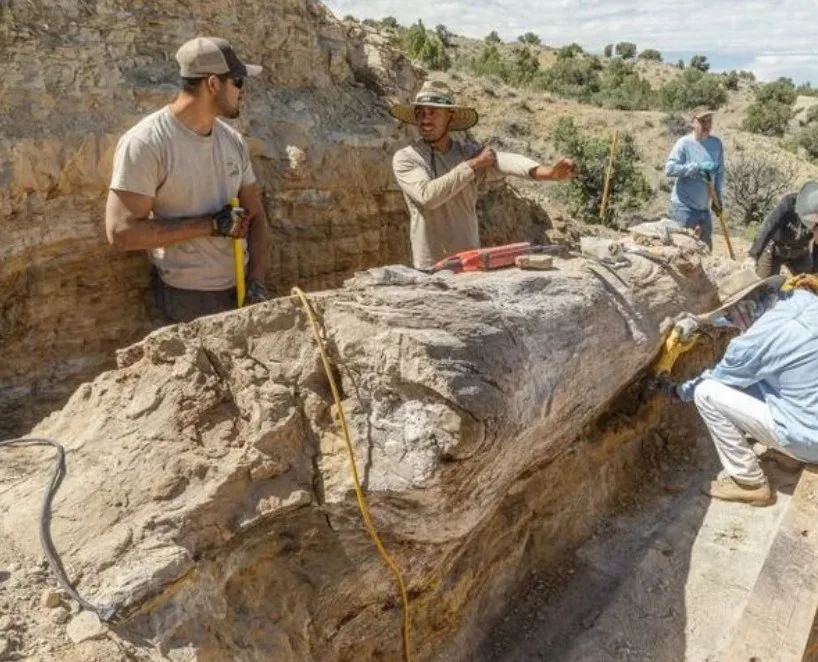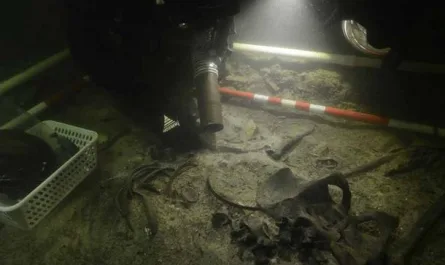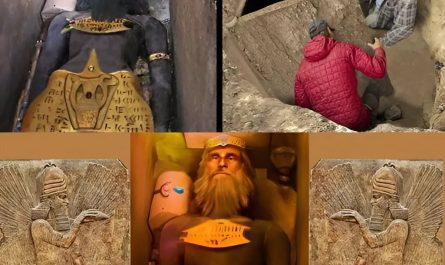Imagine the thrill of discovery, the brush of your tool against something unexpectedly hard and heavy, buried for eons beneath layers of ancient rock. Now picture that “something” turning out to be a petrified tree, so massive it rivals the weight of a small car. This isn’t a scene from an adventure novel; it’s the reality of a remarkable paleontological find in Vernal, Utah: the unearthing of the 152-million-year-old Manwell Log.

For those unfamiliar, Vernal, Utah, is a veritable treasure trove for paleontologists. Nestled within its geological formations lies the famed Morrison Formation, a Jurassic period hotspot teeming with the fossilized remains of dinosaurs and the ancient flora that coexisted with them. It’s within this legendary landscape that researchers stumbled upon a true giant of the past.
The Manwell Log is no ordinary fossil. Stretching an impressive 12 feet in length, this petrified tree is a testament to the immense scale of life during the late Jurassic period. But its size is only part of the story. What truly sets the Manwell Log apart is its exceptional state of preservation. After being entombed in sediment for millions of years, the organic material of the tree has been replaced by minerals, essentially turning it into stone. Yet, incredibly, the original structure remains intact. You can still discern the intricate patterns of its wood grain and the rough texture of its ancient bark – details that offer an unprecedented window into the past.
Scientists have identified this stony behemoth as belonging to the Agathoxylon genus. These were ancient conifers, distant relatives of the Norfolk pine trees we see today. The discovery of such a well-preserved specimen allows researchers to gain invaluable insights into the types of trees that formed the forests of the Jurassic period. Picture these towering Agathoxylon trees casting long shadows across a landscape dominated by colossal dinosaurs – it’s a scene brought vividly to life by the Manwell Log.
This remarkable fossil serves as a crucial piece in the puzzle of understanding Earth’s ancient ecosystems. By studying its structure and composition, paleontologists can learn about the climate, environment, and biodiversity of the Jurassic period. The Manwell Log provides tangible evidence of the plant life that sustained the giant herbivores of the time, offering a deeper comprehension of the intricate web of life that existed millions of years ago.
Today, the Manwell Log is no longer buried in the ancient soils of Utah. It has been carefully excavated and now resides as a prized exhibit at the Utah Field House of Natural History Museum. Here, it stands as a silent giant, a stone sentinel from a bygone era, inviting us to marvel at the sheer scale of geological time and the incredible processes of fossilization.
So, the next time you find yourself in Vernal, Utah, make sure to pay a visit to this extraordinary relic of the Jurassic period. Standing before the Manwell Log, you’ll be gazing upon more than just a stone. You’ll be connecting with a 152-million-year-old story, a tangible link to the ancient forests that once echoed with the footsteps of dinosaurs. It’s a powerful reminder of the deep history embedded within our planet and the incredible discoveries waiting to be unearthed.





